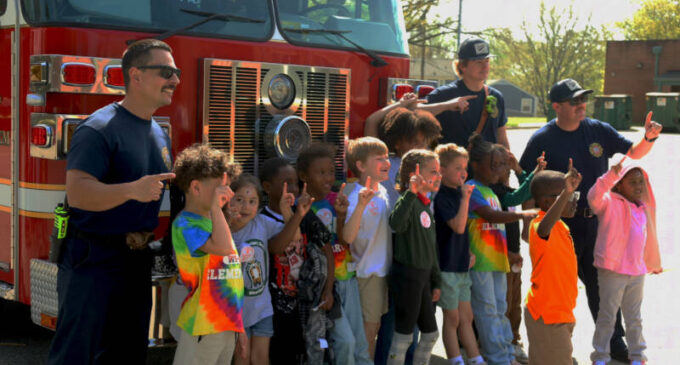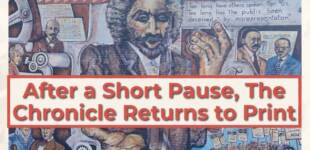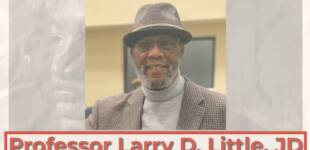Ride-Along with the Winston-Salem Fire Department: A Day Inside the Life of First Responders

My ride-along: A day in the life of the Winston-Salem Fire Department
By Jess Schnur
The Chronicle
I pulled into the parking lot for Station 1 on Marshall Street at 8 a.m., the giant crimson trucks gleamed in the sunlight as they awaited the emergency calls that would put them into immediate service. By my arrival, the firefighters had already been at work for a while, their hands full of buckets and hoses and suds of soapy water. I was greeted by a firefighter who led me into the office of Fire Engineer Joshua Noah, who I had been assigned to follow during my ride-along.
Josh has worked for the Winston-Salem Fire Department (WSFD) for eight years. As a second-generation firefighter, he followed in the footsteps of his father who had previously served at the WSFD for 28 years.
“I didn’t know that I loved fighting fire until my first house fire,” Josh had told me in an interview. “I just wanted to do it because my dad did it, and I always saw the camaraderie and the brotherhood that he experienced, and I got to see that as a kid coming to the station and hanging out with the guys. But until that first fire where we actually got to go in and put the fire out, that’s when I fell in love with the whole idea of the job.”
After our introduction, I was given a tour of the facility. We started in the apparatus bay, the large center of the station where the engines are housed. Station 1 is home to Engine Company One and Ladder Company One. Lining the concrete walls along the bay’s perimeter hung firemen’s jackets and helmets, with names embroidered along the seams in neon visibility fabric.
Our first destination was the dormitory. Inside were blue twin beds with matching pillows, and a corner with pale yellow couches and armchairs. A large screen television was suspended above the sitting area on the concrete wall. An adjoining room was lined with wooden lockers and bathrooms, a hallway led to offices. We ended up back in the bay which had a large screen suspended above a computer on a wooden workbench. The screen displayed in various colors the different calls that were made to each station and engines across the city, from emergency medical services to housefires.
There was also a room with black leather couches surrounding a wall-mounted television serving as a rec room for those with downtime between calls. Just beyond the hallway was the kitchen, equipped with a stove, microwave, refrigerator, and an elongated black and red wooden table. A firefighter was at the stove preparing breakfast. I sat at the table with my guide as he ate his breakfast. There I met Tabetha Childress, the department’s senior community educator, as she debriefed each of the firemen on today’s public education session at one of the local elementary schools. Just then a high-pitched tone blared from the walkies attached to each of the firemen’s hips, drowning out all remnants of small talk. My guide jumped out of his seat, abandoning his half-eaten sandwich, as we all made for the door.
Anticipation bubbled up inside of me as I hoisted myself into the back seat of the truck. The others instructed me how to put on my headset, and the loud noise of the siren was drowned out by country music and conversations over the speakers.
We arrived at the house where police and EMS were parked outside. We all filed in through the door with the paramedics leading the way to the room where the person in need was waiting. After sliding a tarp lined with handles along its edges beneath the individual, the firefighters joined the EMS to hoist them off the bed. I went ahead and held the front door open, watching as they all hobbled down the stairs. They hoisted the individual into the gurney and EMS loaded them into the ambulance. The caller thanked each of the emergency personnel for their service.
From there, we headed for the public education session. Nestled between the sheriff’s black Dodge Charger and EMS ambulance, we all lined up in front of the engine. Josh carried a stack of large, laminated posters that highlighted the many ways to become a firefighter. Groups of elementary school children took turns gathering around, asking questions about how firefighters get the water to extinguish flames, if the firefighters could turn on the sirens, and if the crew were “real firefighters.” But the kids were not the only ones who had been interested in learning more about their local fire department; one teacher had inquired about how busy the firefighters were in Winston-Salem. Josh explained how at times when they were their busiest, they’ve had up to 26 calls in a single day. After listening to firefighters explain how smoke detectors work, multiple siren demonstrations, and valiant tales of breaking down doors of burning buildings, many of the kids discovered a newfound excitement and respect for firefighters.
I had forgotten to eat breakfast that morning and was thankful when Josh suggested a quick stop to pick up lunch on our way back to the station. Tabetha had left a mug out for me this morning, along with a tea bag, to greet me on the kitchen table when I returned. But it was only a short intermission until that now familiar tune rang out in a chorus of walkie-talkies, and we were on the engine once more.
The next mission was another emergency medical call. As we arrived on the scene, EMS met up with us and escorted us inside the building. An individual had collapsed and required immediate resuscitation. It was a flurry of commotion all at once: EMS technicians rushed to their medical packs, while the firefighters began CPR. Crying callers were in distress, as the paramedics tried to ask questions in between consolations. I stood there, limited in my role as an observer, until one of the firefighters asked me to find Josh at the truck to call for more oxygen tanks. The firefighters had remained crouched by the patient, attentive and unrelenting in their task to keep oxygen flowing from its tanks; beads of sweat dotted their foreheads.
Amid the meticulous administration of medical care – the many vials and machines and bodies it took to provide a continuous effort in revival – a sound erupted from the back door to the home. Family members had gathered around the back porch, and their mortified screams reverberated throughout the entire room. Someone had come up to me, asking me what was going on; I stood there, frozen, unable to offer an explanation. A paramedic took over in explaining step by step each procedure they had been rendering and the state of the situation: the individual was unresponsive, without a pulse, and was not breathing. Throughout every step of the way, Josh and the other firefighters stepped aside to explain to me the details of each of the procedures. The hardest part, they told me, was not necessarily feeling bones crack during CPR, nor the squeamish sight of blood, nor was it just the sight of death; it was hearing the anguished cries of those who were still living.
After nearly an hour of ceaseless attempts at resuscitation, it was finally asked: was everyone there good to confirm? After a unanimous agreement, it was over. Periodically, throughout the entire experience, the firefighters continuously checked in with me to make sure I was OK. If I ever needed to talk about it, Josh told me, he would make sure I would get in touch with the resources they have to work through these sorts of situations. This, they explained, was a typical occurrence in their line of work, and just a part of the job.
It was quiet on the way back to the station. We had some downtime once we returned, so we gathered at the picnic table in the bay. Josh had pulled out a guitar and began to play for us as time passed by.
There was one more call as the day was winding down, and we piled into the truck once more. It had been another medical call, only this one had taken nearly no time at all to escort the individual to the ambulance.
On our way back to the station, we made a final stop at the nearby grocery store. The firefighters had been discussing what they should do for dinner that evening and needed to do some last-minute shopping before the night shift. I accompanied them as they meandered through the aisles, picking up boxes of mac and cheese and cans of peas, clad in their uniforms as they pushed around their cart. Occasionally, the muffled voices of the radio would sound from their walkies, directing other stations to ongoing emergencies around town. After a brief debate on what flavor of ice cream they should buy – deciding it would be a pointless endeavor as someone was bound to complain no matter what the decision was – we returned to the station.
We shook hands and said our goodbyes. My day on the clock was coming to an end as their shift was only just beginning – they had a whole night of calls ahead of them.
According to The Firefighter Behavioral Health Alliance (FBHA), research cited from 2018 in the Ruderman Family Foundation’s White Paper Report shows that public safety personnel are five times more likely to suffer from symptoms of post-traumatic stress disorder (PTSD) and depression than civilians, leading to higher rates of suicide among these groups. In an update to this research published in 2022, there has not been a dramatic increase nor reduction to these numbers as of 2021 data, despite a period of extensive changes being made back in 2020. According to further research conducted by the FBHA, partnered with Elizabeth Anderson-Fletcher, Ph.D. and Chaplain Mark Schimmelpfennig, M. Div., from 2014 to 2020, more firefighters died from suicide than in the line of duty. Their research further highlights an increasing recognition within the fire service of the effects of PTSD and Moral Injury – a major conflict in one’s moral code, causing a negative response – to those in the line of duty.
“Mental health is a really big component of what we have to deal with on a day-in-day-out basis,” said Josh, “so I think that our department does a pretty good job now of checking on its people.”
For firefighters, this is more than a job; it’s a way of life. Going into the ride-along, I had envisioned a day of extinguishing flames and kicking down doors, wearing big heavy coats and wielding axes. But in my initial naivety lies a testament to how simple it is to take for granted the full breadth of emergency service – like that of many first responders – and the true sacrifice from those who serve. Many may not see the countless nights spent sleeping in the station, the missed meals discarded at an alarm, nor the tragedies that unfold for those in this line of work; but it is these unseen daily duties that allow firefighters to save lives.
But despite the hardships comes an unmatched camaraderie, an unwavering pride, and an unrelenting desire to serve those in their community in the Winston-Salem Fire Department.










